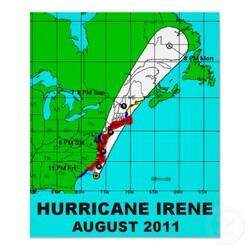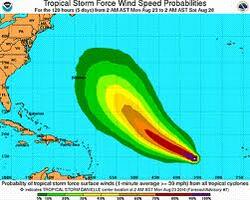Yes, I want to live
after a Hurricane.
Click below to learn what to do Before & After a Hurricane strikes your community.
Get info on our other Insurance Products below:Auto Insurance
Homeowners Insurance Condo Insurance Renters Insurance Rental Home Insurance Rental Condo Insurance Landlord Insurance Motorcycle Insurance Personal Umbrella Policy Earthquake Insurance Flood Insurance Off Road Vehicles Motor Home Insurance Mobile Home Insurance Travel Trailer Insurance Recreational Vehicles Boat & Yacht Insurance Jet Ski Insurance Personal Watercraft Snowmobile Insurance The Great Eastern Hurricane of 1938
A storm formed in the eastern Atlantic near the Cape Verde Islands on September 4, 1938, and headed west. After 12 days, before it could reach the Bahamas, it turned northward, skimming the East Coast of the United States and picking up energy from the warm waters of the Gulf Stream. On September 21, it crashed into Long Island and continued its way north at a speed of 60 miles per hour, with the eye of the storm passing over New Haven, Connecticut. It didn’t dissipate until it reached Canada.
The winds were strong enough that modern scientists place the storm in Category 3 of the Saffir-Simpson Scale. The Blue Hill Observatory outside Boston measured sustained winds of 121 miles per hour and gusts as strong as 186 miles per hour. The winds blew down power lines, trees and crops and blew roofs off houses. Some downed power lines set off fires in Connecticut. But it was the storm surge that caused the most damage. The storm came ashore at the time of the high tide, which added to the surge of water being pushed ahead by the hurricane. The water rose 14 to 18 feet along much of the Connecticut coast, and 18 to 25 feet from New London, Connecticut to Cape Cod, Massachusetts. Seaside homes all along Narragansett Bay, Rhode Island were submerged under 12 to 15 feet of water, and Providence, Rhode Island was inundated with 20 feet. Whole communities were swept out to sea. One of the homes that washed away was Katharine Hepburn‘s beach house in Old Saybrook, Connecticut. Hepburn would later recall: It was something devastating—and unreal—like the beginning of the world—or the end of it—and I slogged or sloshed, crawled through ditches and hung on to keep going somehow—got drenched and bruised and scratched--completely bedraggled—finally got to where there was a working phone and called Dad. The minute he heard my voice he said, ‘how’s your mother?’—And I said—I mean I shouted—the storm was screaming so—’She’s all right. All right, Dad! But listen, the house—it’s gone—blown away into the sea!’ And he said, ‘I don’t suppose you had the brains enough to through a match into it before it went, did you? It’s insured against fire, but not against blowing away!—and how are you?’ The hurricane, one of the most destructive to ever hit New England, was followed by massive river flooding as the water dumped by the storm—10 to 17 inches fell on the Connecticut River basin—returned to the sea. By the time the devastation was over, 564 people were dead and more than 1,700 injured, 8,900 homes were completely gone as were 2,600 boats. Trees and buildings damaged by the storm could still be seen by the 1950s. |
How to survive a Hurricane Aftermath:
The winds and rains of a violent hurricane may have passed, but danger still exists. The Centers for Disease Control and Prevention offers the following safety advice for homeowners returning to their property after a major storm.
Returning Home Be informed. Find out if local authorities have declared your neighborhood safe. Officials may close certain roads due to flooding or suspected road damage. Be aware if there are specific routes you need to take and if authorities have established assembly points for residents in your area. Plan accordingly. Try to return to your home during daylight hours so you won't need to use lights. Make sure all family members are accounted for. Alert others of your status and plans to return home. Drive carefully. Watch out for road hazards like debris and sinkholes. Do NOT drive through any water. Standing water may be hiding large sinkholes or may be deeper than it appears. Attempting to drive through — even in a sport utility truck — may stall your vehicle and put you in a more dangerous situation. Be aware of fallen electrical power lines. Do not drive over them or through any water that may contain downed lines. If power lines fall on your vehicle while driving, continue to drive away from the danger. If your vehicle stalls, do not turn off the ignition and DO NOT get out. Wait for emergency rescue personnel and warn other bystanders away from your vehicle and potential danger. Remain aware. Keep your radio tuned to local news and emergency broadcasts for updated information. If possible, keep a vehicle window slightly open so you can hear emergency sirens and other signals. Once at Your Home and Property Use extreme caution. Approach your home with a critical eye. Be wary of fallen power lines on or near your property. Alert the power company and local authorities of the electrical hazard. Buildings and homes that look undamaged may suffer from hidden dangers of flood damage. Do NOT work in or around any building until it has been examined and certified safe by professional engineers or architects. Leave the area immediately if you sense the building shifting or hear unusual noises that may signal a possible collapse. Do you smell gas? Floodwaters may have shifted supply lines or broken seals. If you smell gas or suspect a leak, turn off the main valve if possible, open the windows and leave the building immediately. Alert the gas company, as well as local police and fire departments. Do NOT turn on any lights, smoke, light matches or do anything that could cause a spark. Do NOT return to your house until you are told it is safe to do so. Avoid the shock of your life. If you see inside your home frayed wiring, sparks from wires or smell something burning but see no evidence of fire, you may have electrical damage. If possible, shut off the electric system at your home's main circuit breaker or fuse box. Use portable, gas-powered electric generators outside on a dry and level surface. Never hook up a generator to your home's wiring. Never use a generator indoors where odorless carbon monoxide can accumulate and kill you. Electrical equipment and appliances must be completely dry before use. Have a certified electrician check appliances if you are unsure of their safety condition. History of our past Hurricanes
|
